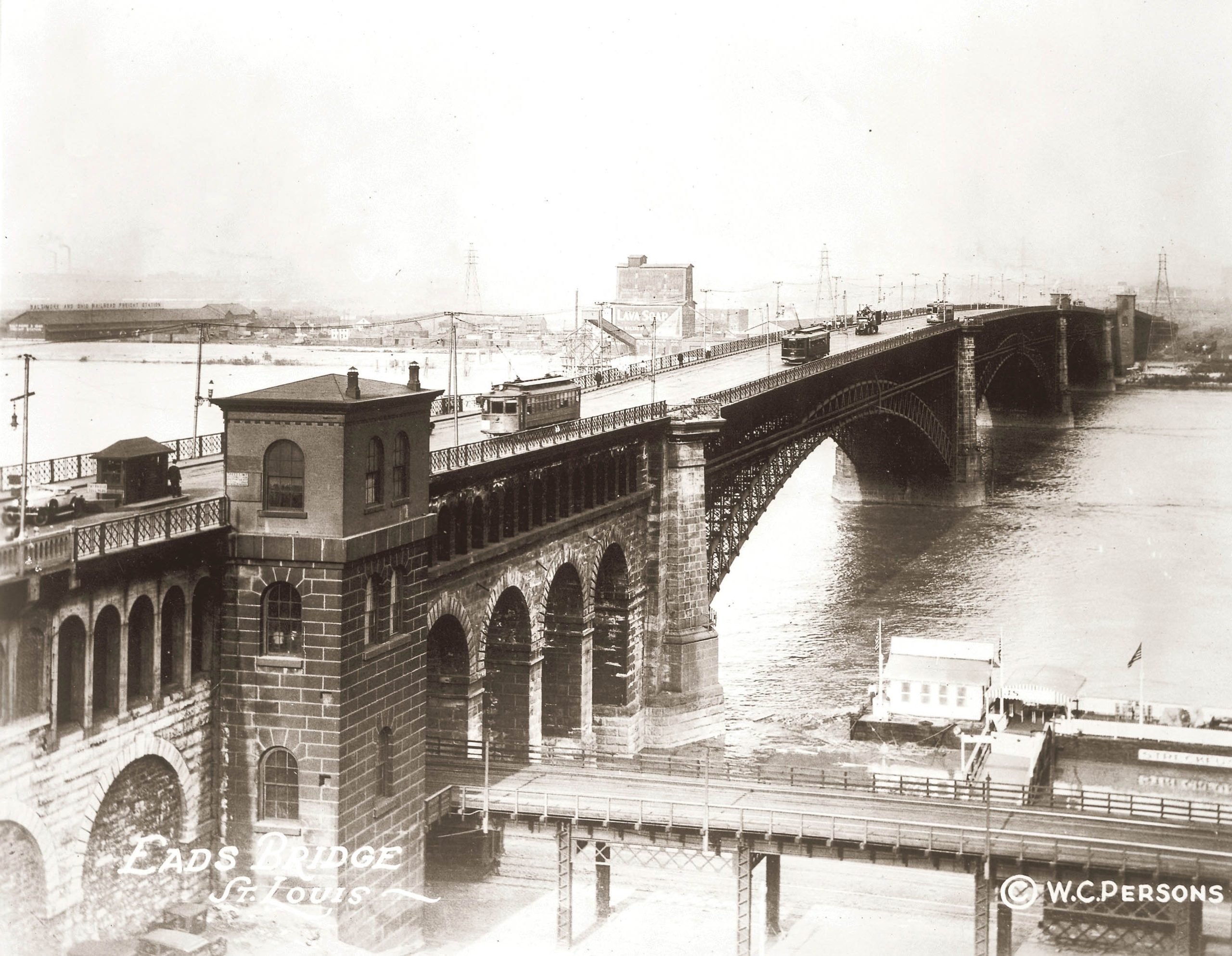This year marks the 150th anniversary of Eads Bridge, the only structure that could rival the St. Louis Gateway Arch as a symbol of St. Louis. “It is indeed a structure of perfection and beauty unsurpassable, and I never tire of it,” wrote poet Walt Whitman in 1882, eight years after the bridge opened for traffic.
Designed and built by renowned engineer James Buchanan Eads from 1867 through 1874, it was the first bridge across the river at St. Louis, the largest bridge built at that time and the first all-steel bridge. It remains the oldest bridge on the Mississippi River.
Construction of the Eads Bridge was in response to the Chicago Railroad Bridge, built in 1856 between Davenport, Iowa, and Rock Island, Ill.; St. Louis was in danger of being bypassed by burgeoning rail commerce.
Cost was no object for the consortium of St. Louis financiers and businessmen who organized as the Illinois & St. Louis Bridge Company. They hired Eads, who had made his reputation salvaging steamboat wrecks and building ironclads for the Union army.
The bridge’s financiers knew the benefits would outweigh the costs. It was a question of economic survival for St. Louis., which could not afford to lose more ground to Chicago.
On a strict dollar-for-dollar comparison adjusted for inflation, the $10 million cost of the Eads Bridge in 1874 is equivalent to $275,499,122 today.
The Eads Bridge is what engineers would call “overbuilt” today. It had to be. There was a tremendous amount at stake. Eads was pioneering and testing many technologies at once. His bridge was the first to use tubular cord members and the first to depend entirely on cantilever construction for its superstructure. The bridge looked backwards, too, using modern materials for a design based on the Roman arch of antiquity. Pneumatic caissons were used for the first time in the United States in the construction of bridge’s piers, which were sunk to the never-before-attempted depth of 123 feet.
All those “firsts” came with huge risks—although they didn’t faze Eads, who had confidence in his calculations.
Infrastructure advocates today often look back longingly to times when large civil works projects were built faster and with fewer regulatory impediments. It is indeed remarkable that the Eads Bridge was started in 1867 and completed by 1874.
But those early projects had costs that are, rightly, no longer tolerated. During construction, 15 workers died, two other workers were permanently disabled, and 77 were severely afflicted with the bends from working in the pressurized environment of the sunken caissons. Not enough was known about those effects because the technique was so new.
Not all Eads’ innovations were driven by a pure pioneering spirit. Structural steel was required because it was the only means of supporting the height restrictions demanded by steamboat interests, who saw the bridge as a threat to their business. A subcontractor, the Keystone Bridge Company, founded in 1865 by Andrew Carnegie, erected the steel superstructure.
Eads’ innovations continued beyond his namesake bridge. He is also memorialized in the South Pass jetties near the mouth of the Mississippi River, which were credited with reviving the Port of New Orleans. Eads’ jetties used the river’s force to scour itself, which is a strategy the Corps of Engineers has used ever since. With the jetties, Eads again was a pioneer. And in reviving the Port of New Orleans, Eads also boosted St. Louis’ own river commerce.
In 2016, The Eads Bridge completed a four-year, $48 million rehab, its first. It is the only connection for the MetroLink light rail system between the two states, carrying 300 MetroLink trains each day. The crews working on the rehabilitation encountered unknown alloys and handmade pieces from the 1870s. Through this landmark project, support steel that dates to the 1920s or older was replaced, and the entire superstructure was blasted and repainted. The MetroLink track system was upgraded, including rail, ties and the installation of new Overhead Conductor Rail, making Metro one of the first transit systems in the nation to use this technology to power the trains efficiently and reliably. The rehab put the Eads Bridge in shape to carry MetroLink and motor traffic over the Mississippi River until at least the year 2091, project leaders said.



